Observe the sky: April 2025
After a historically rainy March in terms of cloudy days, April arrives with what we hope will be the first observation for the activity “Observe the Sky from Ciencias” not frustrated by clouds. For said observation, scheduled for the beginning of April (stay tuned), we hope to be able to observe Jupiter, Mars, the Moon, the Orion Nebula, and perhaps some other little surprise. In April we will also have the occultation by the Moon of the Pleiades, the famous open cluster in Taurus, and more. Let’s begin!
| Dia | Hora | Evento |
|---|---|---|
| 1 | 21.00 | Pleyades occultation by the Moon |
| 3 | 01:27 | Moon in conjunction with Jupiter 5.48° N of Jupiter |
| 5 | 04:17 | First Quarter |
| 5 | 21:51 | Moon in conjunction with Mars 2.11° N of Mars |
| 7 | 14:43 | Venus in conjunction with Saturn 7.84° N of Saturn |
| 13 | 02:24 | Full Moon |
| 14 | 00:52 | Moon at apogee ( 406294 km) |
| 17 | 05:52 | Mercury in conjunction with Neptune 0.69° S of Neptune |
| 21 | 03:25 | Mars at quadrature |
| 21 | 03:40 | Last Quarter |
| 21 | 20:59 | Mercury greatest western elongation ( 27.39°) |
| 24 | 23:54 | Venus in conjunction with Saturn 4.15° N of Saturn |
| 25 | 04:55 | Moon in conjunction with Saturn 2.03° N of Saturn |
| 25 | 05:01 | Moon in conjunction with Venus 2.08° S of Venus |
| 26 | 00:07 | Moon in conjunction with Mercury 3.90° N of Mercury |
| 27 | 18:00 | Moon at perigee ( 357215 km) |
| 27 | 21:33 | New Moon |
| 30 | 19:01 | Moon in conjunction with Jupiter 5.37° N of Jupiter |
April is the month when the Sun gains the most average height change over the horizon. Its maximum height goes from about 57.6° at the beginning of the month to 68.3° at the end. This clearly affects the duration of the days, which gradually get longer, with earlier sunrises and later sunsets. On the other hand, a waxing crescent Moon (see figure 2) will occult the Pleiades star cluster in Taurus between approximately 21:00 and 22:00 on April 1st. Unfortunately, the phenomenon will occur with both celestial bodies very low on the horizon, making observation difficult. That said, given the low level of illumination of the Moon that day, the Pleiades will be easily distinguishable very close to our natural satellite (see figure 4).
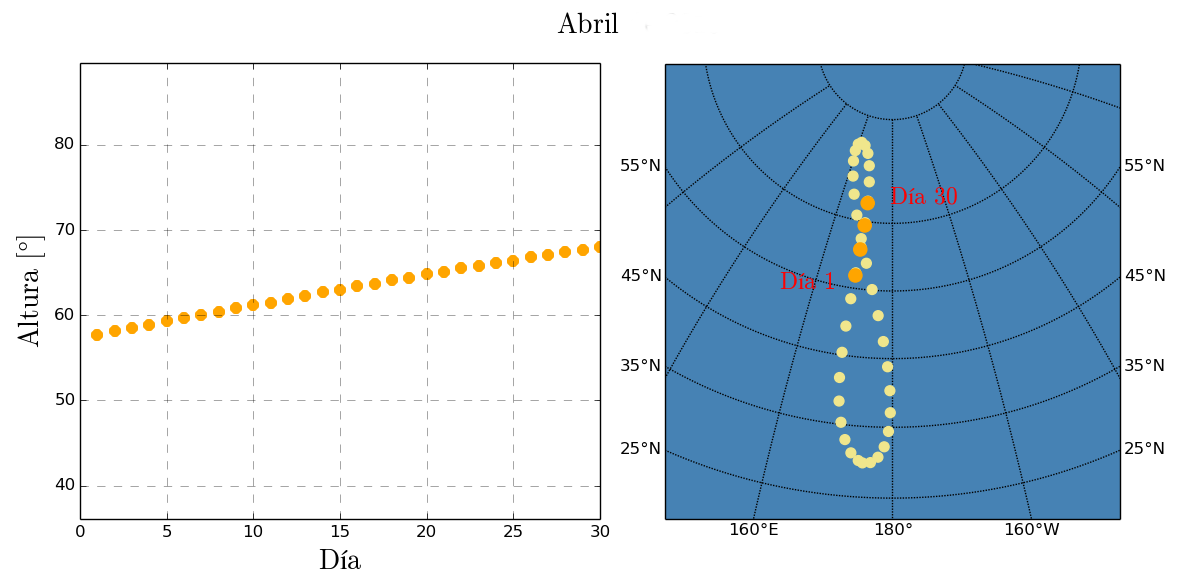
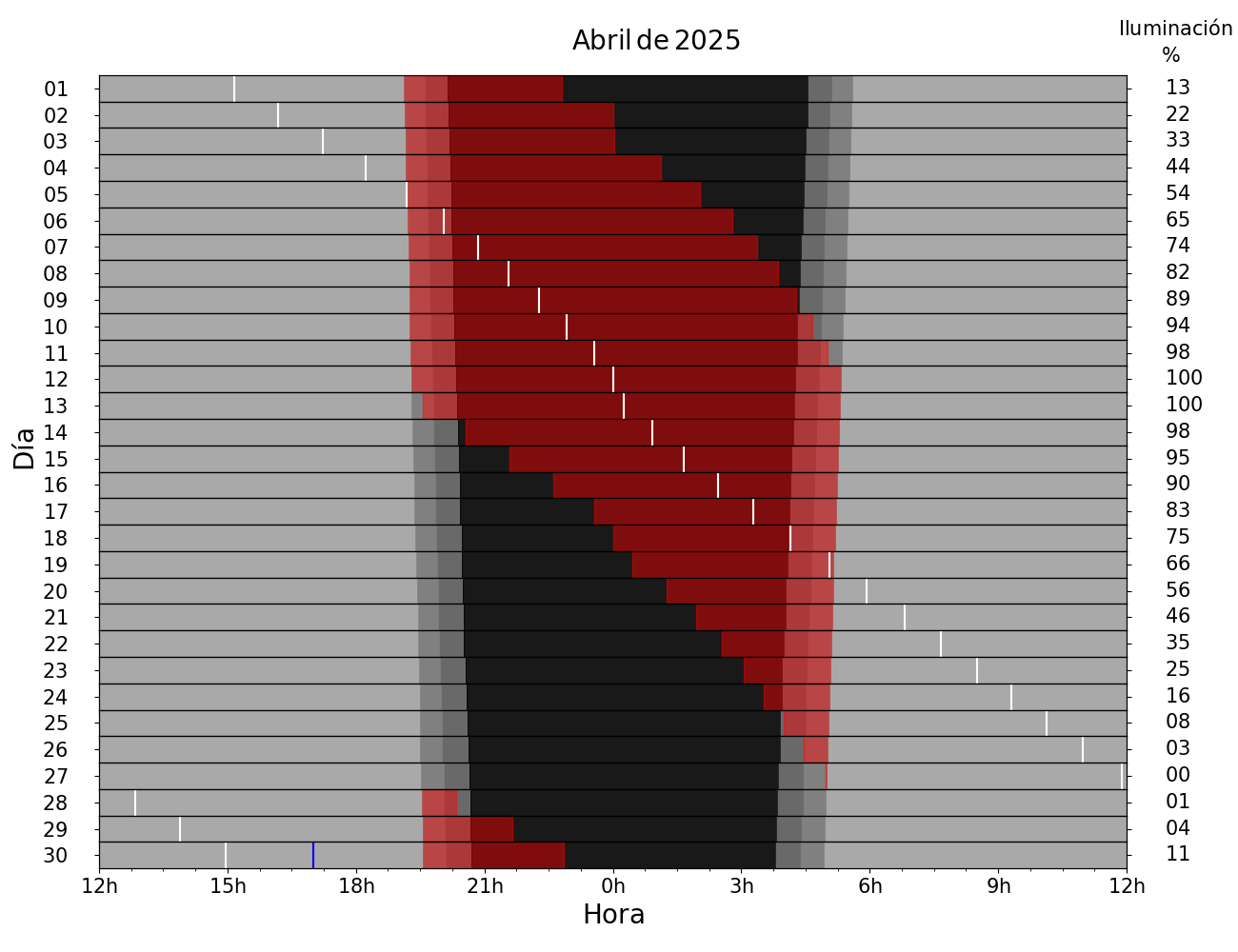

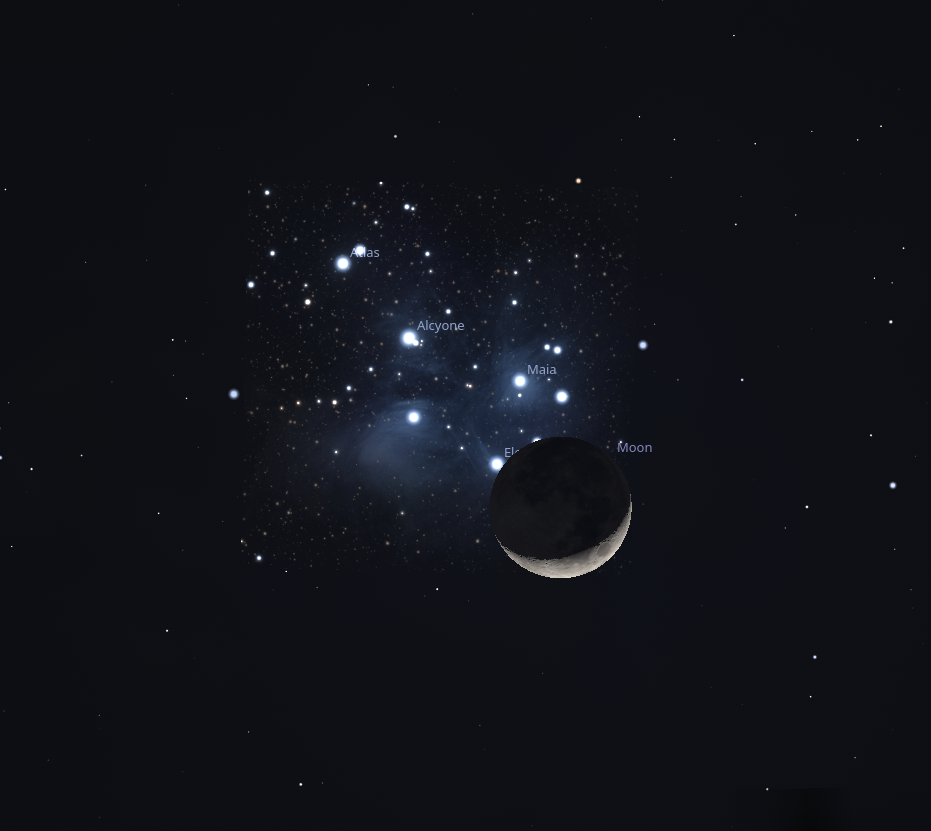
Regarding the planetary situation, we go from the ‘chaos’ (in the good sense of the word) of the month of January when all planets were visible at the beginning of the night, to the tranquility of April, a month in which only Jupiter and Mars are worthy of being observed at the beginning of the night.
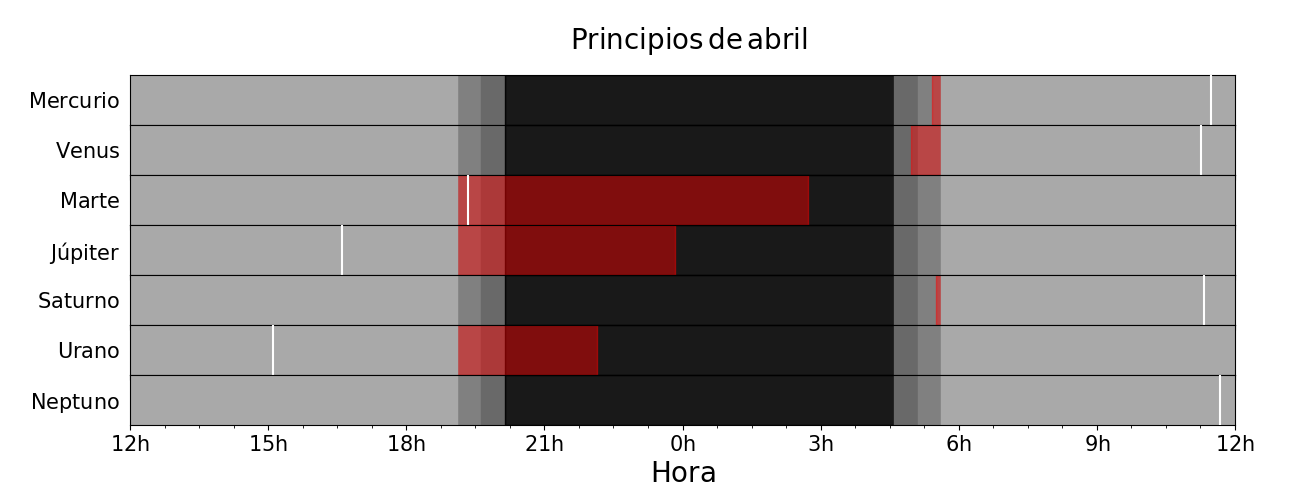
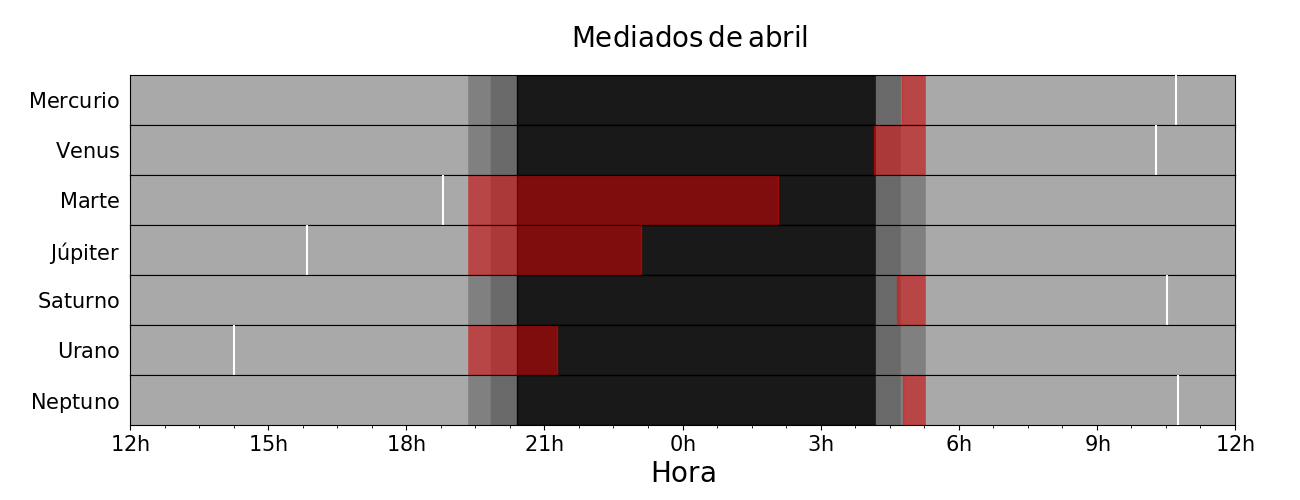
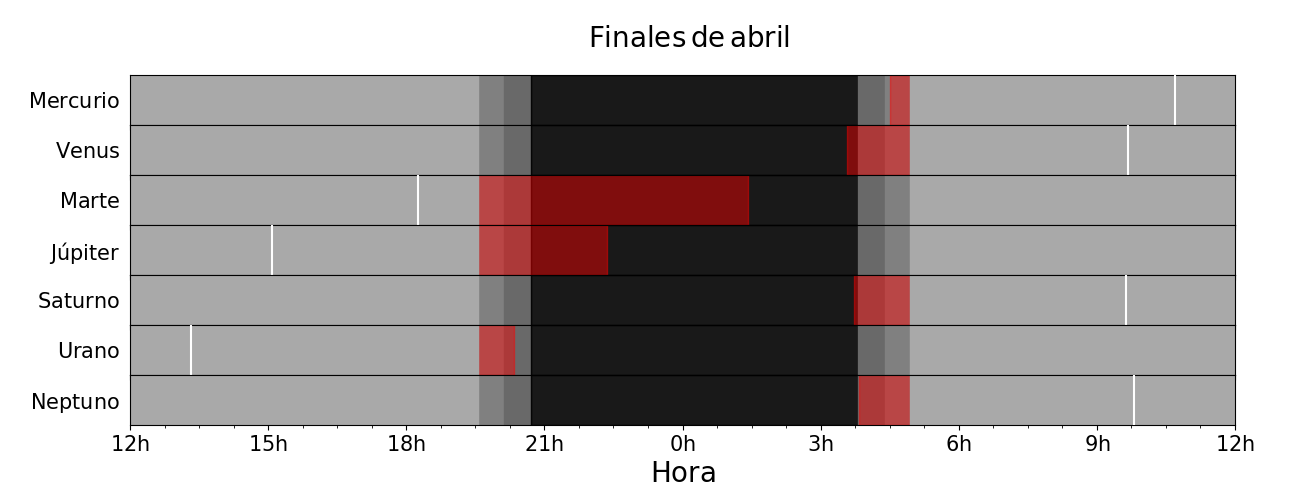
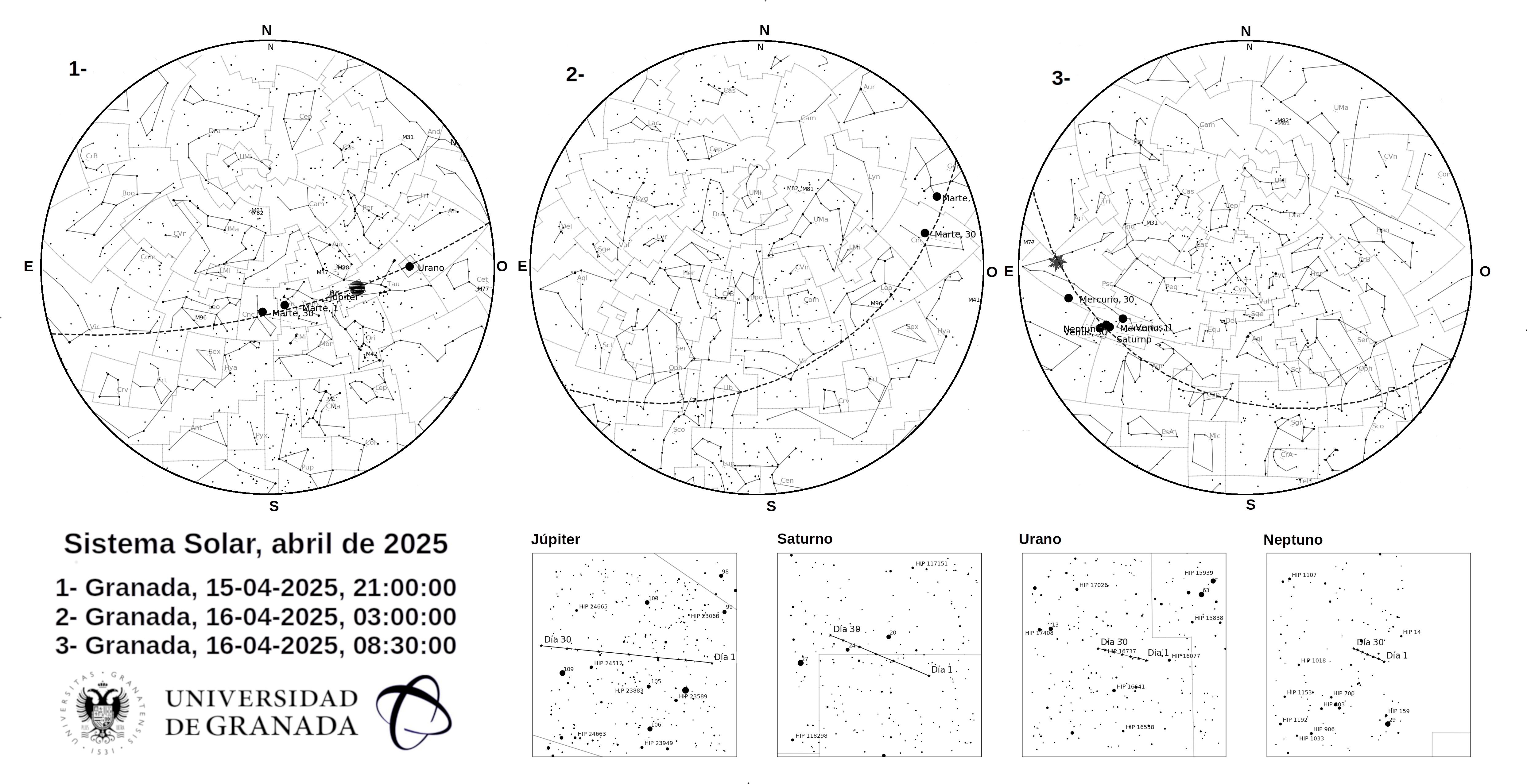
Now we must remember that Jupiter is rapidly approaching (in projection from our position) the Sun, which translates to Jupiter’s observation time being limited. Therefore, to take advantage of the last few weeks of observing Jupiter, I have attached the table (Jupiter table) detailing all the events that its Galilean moons will protagonize this month of April. In April we can highlight the evenings/nights of the 5th and 13th (with Io and Europa as protagonists with transits, eclipses and projections aplenty). For more information, please consult the table, as almost every night there are events worth mentioning.
If we continue moving a little further away from our neighborhood, we see that April begins to clearly mark a transition in the sky that we can observe. We leave behind the starry winter, dominated by constellations like Orion or the Big Dog, and full of bright stars (Cappella, Rigel, Sirius…), and we begin to be able to see a star-poor area. This stellar poverty is a direct consequence of looking in a direction perpendicular to the disk of our Galaxy. But it’s not all bad news. In April we will be able to observe many galaxies, including the Virgo and Coma galaxy clusters.
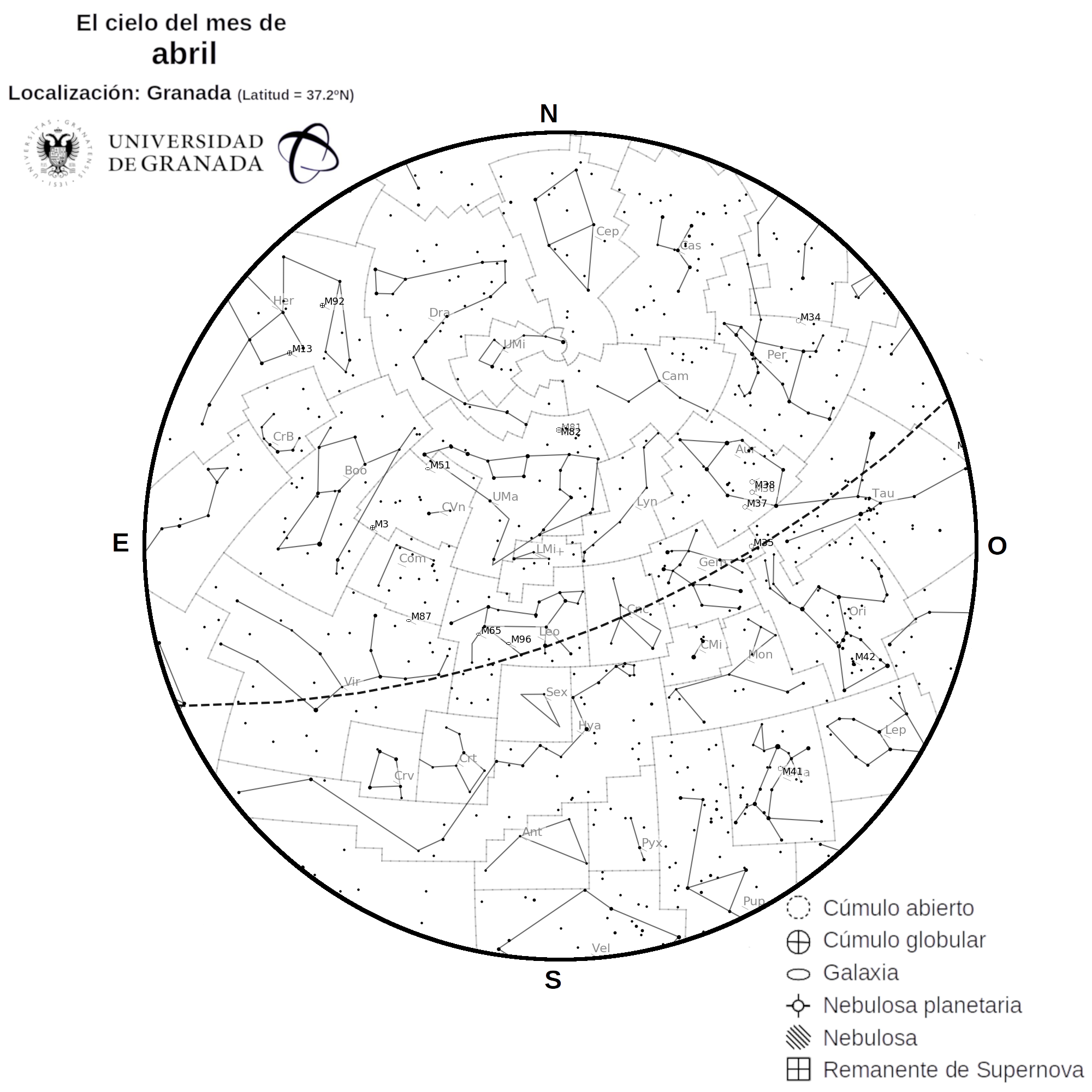
And finally, as usual, it’s always worth taking a little time to search for the International Space Station (ISS), that orbital laboratory that teaches us so much. In the following link you can find a table (ISS table) with the main visible passes of the ISS from Granada. This month we highlight the passes of April 1st, 19th, 21st, 22nd, and 24th (with a magnitude close to -3.5, observable at dawn), the passes of the 11th and 12th (with magnitudes of -2.5 and -3). Unfortunately, to enjoy these passes it will be necessary to wake up early (except for the April 1st pass, visible at 9:14 pm), as they are visible around 5-6 in the morning (check the table for more information).
And so we reach the end of April, a month that once again comes full of astronomy, a month that we hope will mark the beginning of a good period of clear nights to enjoy the Universe that surrounds us. And finally, I remind you that we are open to suggestions on our Telegram channel, where you can also stay up to date on activities, as well as receive timely alerts about easily observable astronomical events. Here is the link! We hope to see you soon at our activities.
Clear skies!
